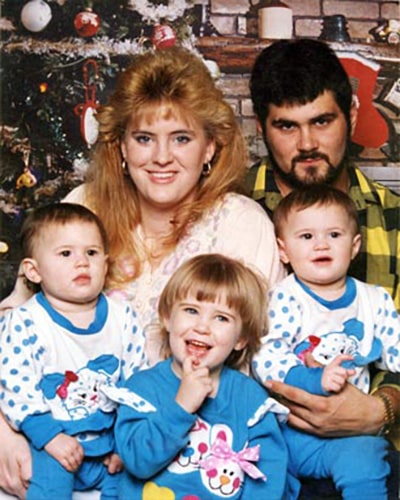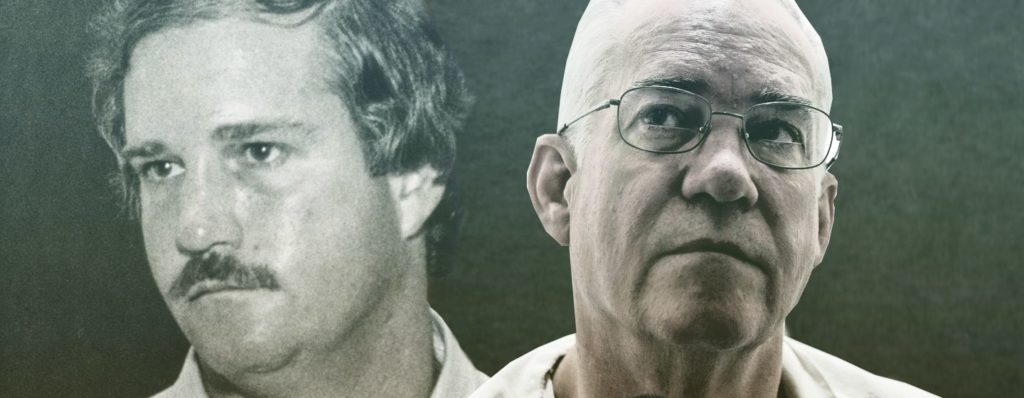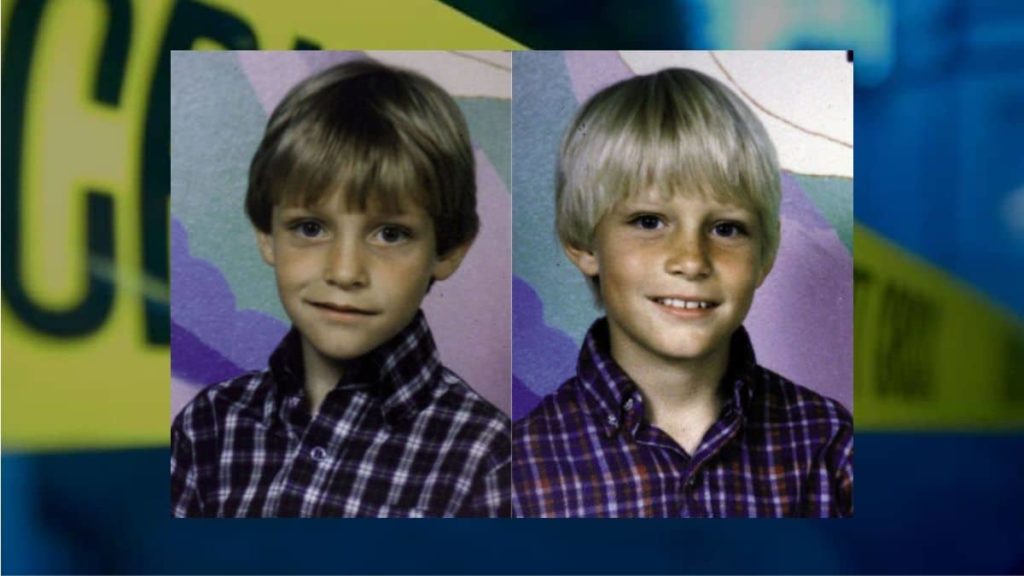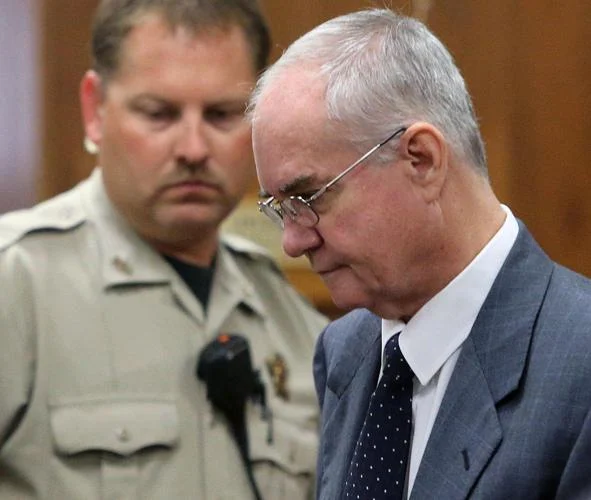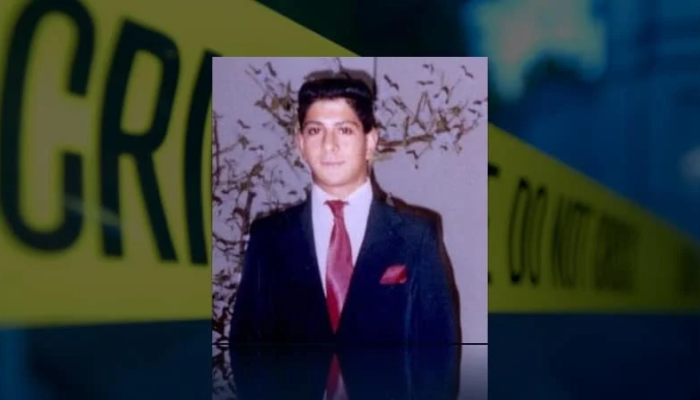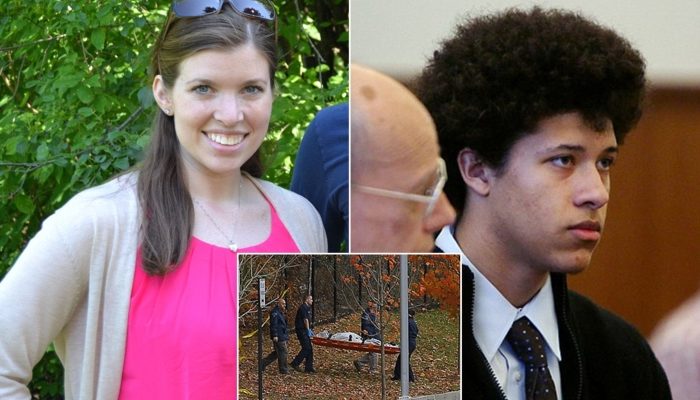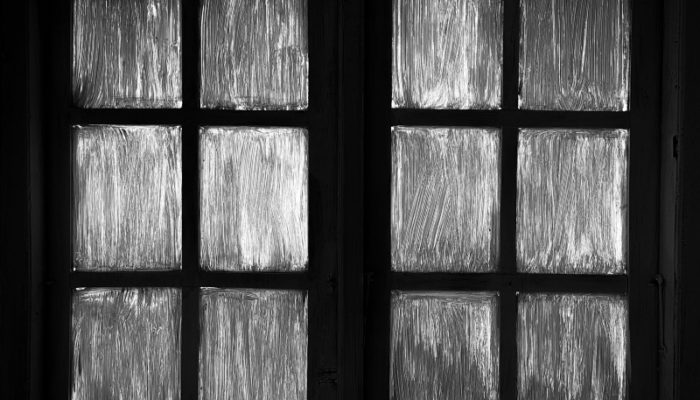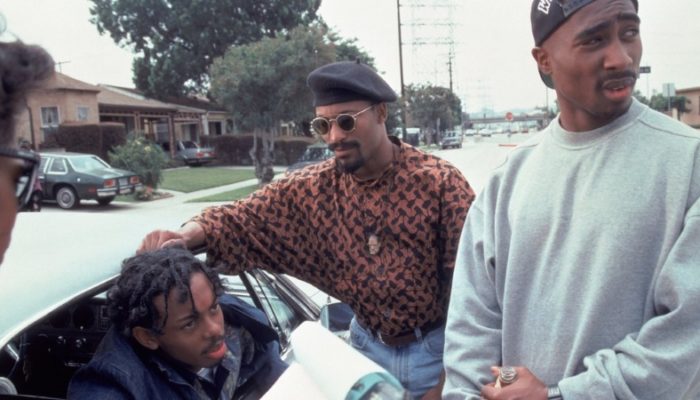In the realm of true crime, the Ed Graf case stands as a perplexing enigma, a narrative that intertwines economic missteps, allegations of murder, and the evolving landscape of forensic technological know-how. Ed Graf, once an employee at Community Bank in Texas, confronted accusations of embezzlement, paying a hefty sum to ward off legal consequences.
However, the gravity of his transgressions took a sinister turn whilst, in 1988, he changed into convicted of the brutal murders of his stepsons, Joby and Jason. This tragic tale unfolds against the backdrop of 505 Angel Fire Drive, an area all the time marked with the aid of the smoke inhalation and excessive burns suffered using the inseparable brothers. Join us on an adventure through the twists and turns of a case of Ed Graf that transcends time, pitting old-school Texas justice against the improvements of cutting-edge forensics a quarter of a century later.
Background of Ed Graf:
Ed Graf’s story commences inside the bustling halls of Community Bank in Texas during the 1980s, in which he determined himself entangled in allegations of embezzlement. This expert misstep solidified a looming shadow over Graf’s reputation, prompting him to make a full-size charge exceeding $75,000 to keep away from the specter of prosecution. Little did Graf recognize that these financial woes would light in comparison to the typhoon that awaited him.
As the accusations of embezzlement lingered, Graf’s lifestyle delivered a layer of complexity. In the complicated web of relationships, his ex-spouse Clare became a primary determine. Their tumultuous union revealed shades of possessiveness, with Clare labeling Graf as ‘the most possessive person’ she had ever recognized. Allegations of infidelity further muddied the waters, putting the level for a narrative that might transition from monetary misconduct to accusations of the most heinous nature—a story that could unfold inside the court docket, for all time changing the direction of his lifestyle.
The Tragedy: Conviction Based on Arson Science:
In the fateful year of 1988, a Texas jury overturned a conviction that would forever link Ed Graf to a gruesome crime—the murders of his stepsons, Joby and Jason. The prosecution’s narrative painted a chilling photograph: on August 26, 1986, Graf allegedly incapacitated the young brothers, aged 9 and 8, before putting them within the return of their circle of relatives shed. The prosecution argued that Graf then doused the shed in fuel, locking the boys inner and placing the structure ablaze.
What makes this story all the extra chilling is that the conviction rested heavily on arson technology—a field that, over time, has established to be some distance from infallibility. The techniques used to determine arson within the 1980s have since been debunked, raising unsettling questions about the reliability of the proof that led to Graf’s responsible verdict. As we resolve the layers of this tragic narrative, the conflict between present-day forensic insights and the incorrect technology of yesteryear becomes a relevant subject, though the very basis of the conviction that forever altered the trajectory of Ed Graf’s life.
The Crime Scene: 505 Angel Fire Drive:
The address 505 Angel Fire Drive, as soon as a tranquil nook of a Texas community, became an indelible mark of sorrow and horror on August 26, 1986. It became right here, inside the backyard of the Graf own family domestic, that the lives of younger brothers, Joby and Jason, had been tragically cut short.
The crime scene, for all time etched within the reminiscences of people who investigated and those who lived nearby, tells a haunting story. These two inseparable, blond-haired siblings, recognized for their athleticism and shared adventures, met an unimaginable destiny on that fateful day.
The shed, now a somber monument to the past, served as the putting for a crime that could seize the eye of a whole network. Locked inside its partitions, the lads faced a fate no toddler had to undergo—triumph over by way of smoke inhalation and extreme burns as flames engulfed their young lives. The once serene backyard, now tainted by tragedy, became a poignant reminder of the innocence lost on that unforgettable summertime day.
The Trial and Conviction:
In 1988, the courtroom became the level for a dramatic disagreement among the prosecution, led by zealous legal professionals, and Ed Graf, the accused. The trial unfolded with a narrative that painted Graf as the offender of a heinous crime—accused of knocking out his stepsons, Joby and Jason, and subjecting them to a torturous fate inside their family shed.
The prosecution supplied what appeared like compelling evidence, weaving a story of gasoline, locked doorways, and the tragic loss of life of innocent boys. However, as we scrutinize the trial court cases, questions arise about the reliability of the evidence that brought about Graf’s conviction. Were the jurors swayed by the emotional weight of the tragedy, or did they realize the limitations of the forensic science hired at some point in that era?
The courtroom, frequently taken into consideration as a bastion of justice, became a battleground in which the conflict between accusations and protection strategies played out. Was the conviction a result of a truthful and unbiased trial, or did systemic problems and the fervor surrounding the case contribute to a verdict that might adjust the direction of his life forever?
Ed Graf’s Personal Life: A Closer Look:
To realize the man accused of such heinous crimes, we flip our attention to Ed Graf’s personal life—a realm of tricky relationships, allegations of possessiveness, and whispers of infidelity.
In the narrative of his lifestyle, his marriage to Clare emerges as a pivotal bankruptcy. Described by Clare as ‘the maximum possessive person’ she had ever known, Graf’s demeanor inside the realm of personal relationships provides a layer of complexity to the unfolding story. The dynamics between Ed and Clare offer a glimpse into a union marked by possessiveness and, in the end, dissolution.
Yet, the personal intricacies do not quit there. Allegations of infidelity similarly cloud the waters, with claims that Graf engaged in extramarital relations. Such accusations, if genuine, cast shadows on the individual of a person already dealing with the gravest of fees.
Legal Repercussions: A Quarter of a Century Later:
Fast ahead a quarter of a century from the unique conviction, and his case unearths itself at the center of a prison maelstrom another time. The passage of time has not dulled the echoes of that tragic day, however, it has allowed for the emergence of the latest insights, reexamining the rules of justice that condemned him in 1988.
The catalyst for this reevaluation is the evolution of forensic technological know-how. Modern advancements shed an obtrusive light on the issues of the arson technological know-how that played a pivotal function in Graf’s conviction. As the clinical network redefines the parameters of what constitutes reliable evidence, the very floor upon which the case changed into construction starts to quake.
Texas, renowned for its adherence to conventional felony practices, turns into the battleground for a brand new trial—a trial that pits the knowledge of the prevailing against the selections of the beyond. The prison repercussions of a quarter-century-old conviction unfold, though no longer handiest the validity of Graf’s guilt but additionally the very essence of justice itself.
Key Players: People Involved within the Case:
As we get to the bottom of the layers of the Ed Graf case, it becomes apparent that in the back of the criminal lawsuits and the crime scene, key players emerge—individuals whose actions and testimonies from the narrative, cast shadows of doubt or reaffirming convictions.
- Ed Graf: The accused at the coronary heart of the storm, Ed Graf’s moves, relationships, and demeanor become the focal point of the hypothesis. His journey from an alleged embezzler to a convicted assassin paints a complex portrait of a man entangled inside the web of private and prison woes.
- Clare (Graf’s ex-spouse): Clare’s characterization of Graf as ‘the most possessive person’ provides an important lens into the dynamics of their marriage. Her testimony will become pivotal in understanding the accused beyond the court docket, losing mild on the personal strife that could have contributed to the events in the query.
- Carol Schafer (Clare’s first-class buddy): An observer from the outer edge, Carol Schafer’s account, as relayed via Clare, provides every other layer to the narrative. Her husband, Earl, allegedly witnessed his infidelity at the night time of Graf’s bachelor birthday celebration, including intrigue to the non-public dynamics surrounding the accused.
- Legal Representatives: The attorneys on each facet of the legal struggle play an essential position in shaping the trajectory of the case. Their techniques, shows, and arguments come to be instrumental in influencing the jury’s belief of the occasion.
- Scientific Experts: Forensic professionals and scientists worried about the original trial and next reevaluation contribute appreciably to the unfolding drama. Their evolving understanding of arson technology turns into a linchpin in challenging or upholding the conviction.
- Joby: Joby 9, the elder of the two brothers, changed on the cusp of childhood. Described as athletic and colorful, his days have been likely packed with the exuberance of adolescent adventures. Little did he recognize that his lifestyle could be intertwined with a narrative that would forever alter the trajectory of his family’s lifestyles.
- Jason: At the soft age of 8, Jason becomes the younger sibling, his lifestyle nevertheless unfolding in the realm of early life innocence. Blond-haired and full of existence, he shared a near bond with Joby, developing a duo that was inseparable in each life and, tragically, in demise.
Public Opinion and Media Coverage:
In the intricate tapestry of his case, public opinion and media coverage play pivotal roles, influencing perceptions, shaping narratives, and contributing to the enduring legacy of this genuine crime saga.
- Media Portrayal: The media, regularly a powerful narrator of societal narratives, played a sizable role in shaping how his case became provided to the general public. Headlines, information reviews, and televised coverage painted a shiny image of a man accused of heinous crimes. The sensational nature of the allegations, coupled with the tragic lack of two young lives, made the case a focus of media interest.
- Societal Reaction: As info on the case opened up within the public area, societal reactions ranged from surprise to outrage. The tragedy of Joby and Jason’s deaths, blended with the allegations against Ed Graf, elicited strong feelings from the network. The public’s perception of the accused became molded by using the media’s portrayal, creating an environment of scrutiny and judgment.
- Impact on Community Dynamics: The ripple outcomes of the case extended past legal boundaries, permeating the material of the network. Neighbors, pals, and pals determined themselves thrust into a story that transcended the courtroom, fostering a collective feeling of grief, suspicion, and interest.
- Revisiting the Narrative: In the sector of a century that accompanied his preliminary conviction, media insurance took on a brand new tone because the case changed into revisited. The emergence of current forensics and the debunking of previous arson science delivered layers to the narrative. Media outlets, cognizant of the evolving know-how of the case, contributed to a nuanced reexamination of the events surrounding Ed Graf.
- Public’s Role in Legal Reevaluation: The courtroom of public opinion performed an oblique but huge function in pushing for a legal reevaluation of Graf’s case. As the public became extra knowledgeable about the failings within the original trial, the demand for justice aligned with truth gained momentum, influencing the trajectory of criminal lawsuits.
Additional Tips:
- Local Perspectives in Kerrville: Investigate the impact of Ed Graf’s relocation to Kerrville on the local community. How did residents react to having a person with such an infamous past in their midst? Were there community discussions or safety concerns?
- Legal Advocacy and Activism: Explore any felony advocacy or activism that can have arisen around Graf’s case in Kerrville. Were there agencies or people advocating for his innocence or supporting the reevaluation of the evidence?
- Community Healing and Support: Look into projects or support systems within Kerrville aimed at assisting the network to heal from the trauma associated with Graf’s presence. Were there counseling offerings, network conferences, or outreach programs to address the emotional aftermath?
- Updates on the Legal Front: Provide any recent updates on the criminal proceedings related to Graf in Kerrville. Has there been development inside the reevaluation of his case? Are there new trends that shed similar light on the intricacies of the original conviction?
- Reflections on Criminal Justice Reform: Consider incorporating reflections on how the Graf case in Kerrville contributes to discussions on criminal justice reform. Does the case highlight flaws within the criminal machine that need addressing, and are there community-pushed projects pushing for trade?
Conclusion:
As we finish our exploration of the Ed Graf case, the complicated layers of this genuine crime narrative continue to resonate with the echoes of a beyond shrouded in controversy. The tragedy that unfolded at 505 Angel Fire Drive, claiming the lives of Joby and Jason, stays a somber reminder of innocence lost and justice sought.
The evolution of Ed Graf’s story, from allegations of embezzlement to a quarter-century-length felony warfare, challenges our perceptions of justice and the reliability of forensic technology. The clash between old-style Texas justice and the improvements in modern forensics underscores the complexities inherent in the pursuit of reality.
In the case, the Ed Graf case transcends the confines of a courtroom drama; it will become a mirrored image of societal values, the effect of media narratives, and the iconic quest for justice that spans many years. As the felony repercussions spread, the echoes of Joby and Jason’s tragic tale linger, urging us to keep unraveling the truths that lie underneath the surface of this haunting saga.
FAQs:
Q1: Who is Ed Graf, and what’s the background of the case?
A1: Ed Graf changed into an individual convicted in 1988 for the murders of his stepsons, Joby and Jason, based on allegations of arson. The case originated in Texas, in which Graf confronted accusations of embezzlement at the same time as working at Community Bank in the 1980s. The conviction rested on outdated arson science, mainly quarter-century criminal warfare for a new trial.
Q2: What had been the specific allegations in opposition to Graf in the unique trial?
A2: Prosecutors argued that on August 26, 1986, Graf rendered his stepsons unconscious, located them within his family shed, spread gas, locked the shed, and set it ablaze. The brothers, Joby (9) and Jason (8), tragically died from smoke inhalation and intense burns.
Q3: Why was the authentic conviction questioned, mainly to a brand new trial?
A3: Advances in forensic technology exposed flaws inside the original arson investigation, prompting a reevaluation of the evidence. The debunking of old arson technology became a valuable element in the reliability of the convictions and caused the supply of a brand new trial.
Q4: What is the importance of Graf shifting to Kerrville?
A4: Graf’s relocation to Kerrville provides a brand new chapter to the case, raising questions about network dynamics, nearby reactions, and the broader implications of having a person with this sort of notoriety beyond residing in a brand new network.
Q5: How has the local community in Kerrville replied to Graf’s presence?
A5: The nearby response in Kerrville is a multifaceted component of the case. Exploring community sentiments, issues, and any tasks geared toward addressing the impact of Graf’s presence can provide insights into how the community is navigating this complex scenario.
READ MORE: Unmasking Jeremy Pauley: The Controversial World of a Body Modification Artist

